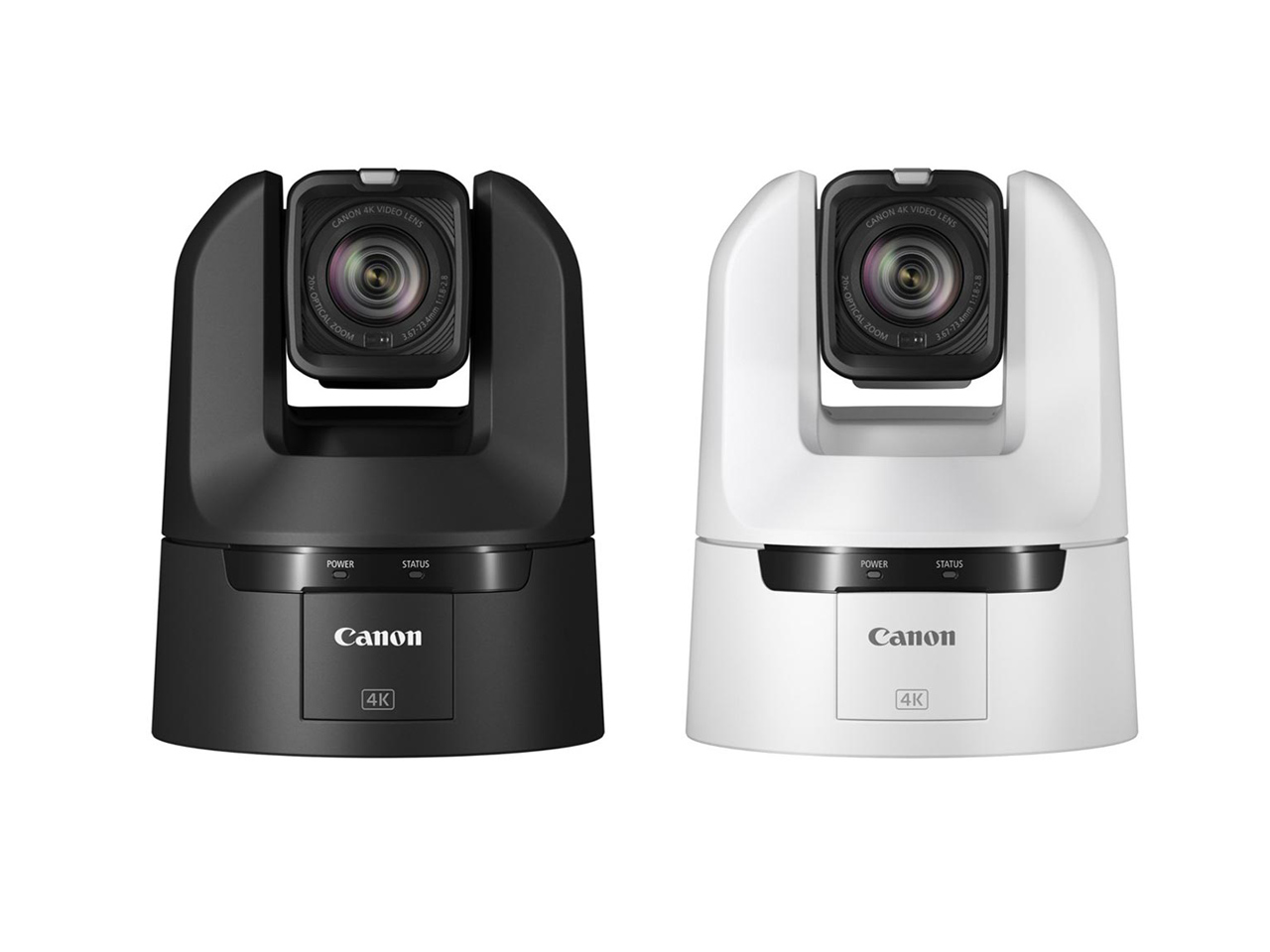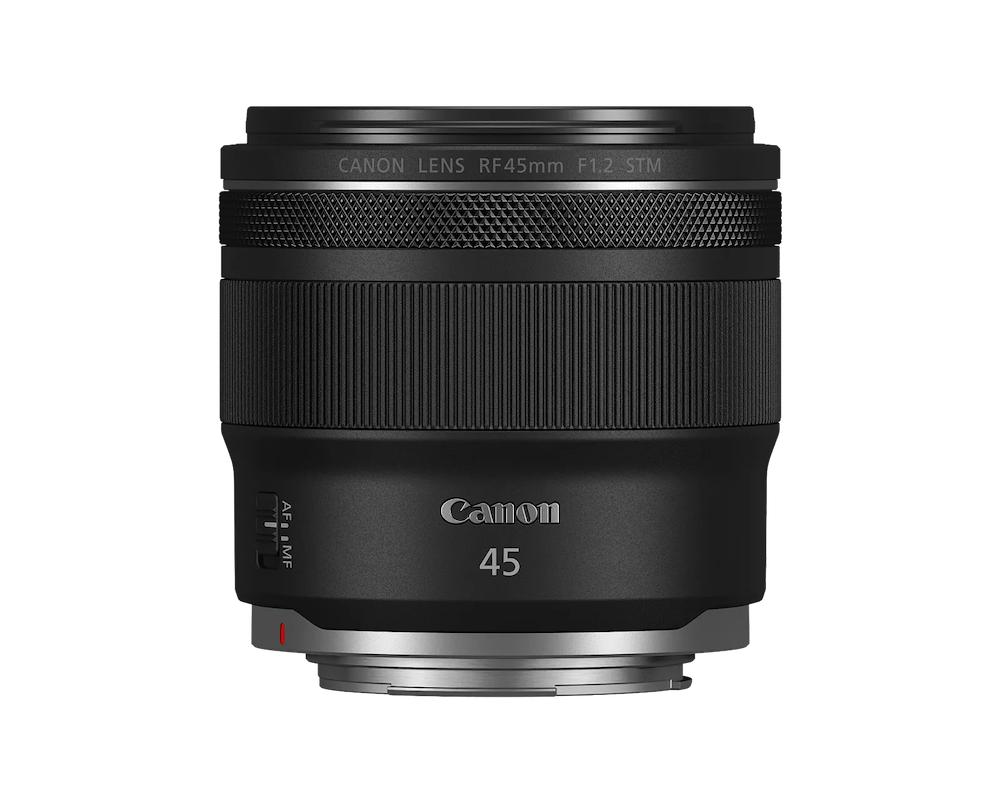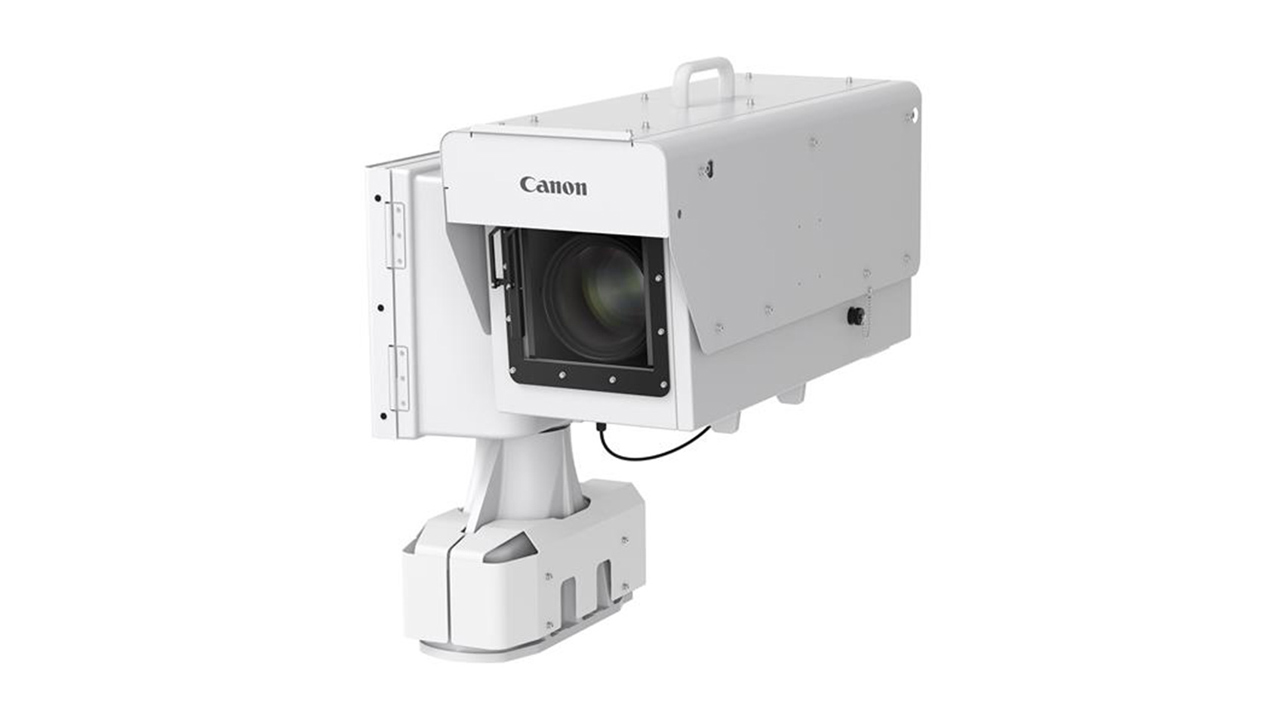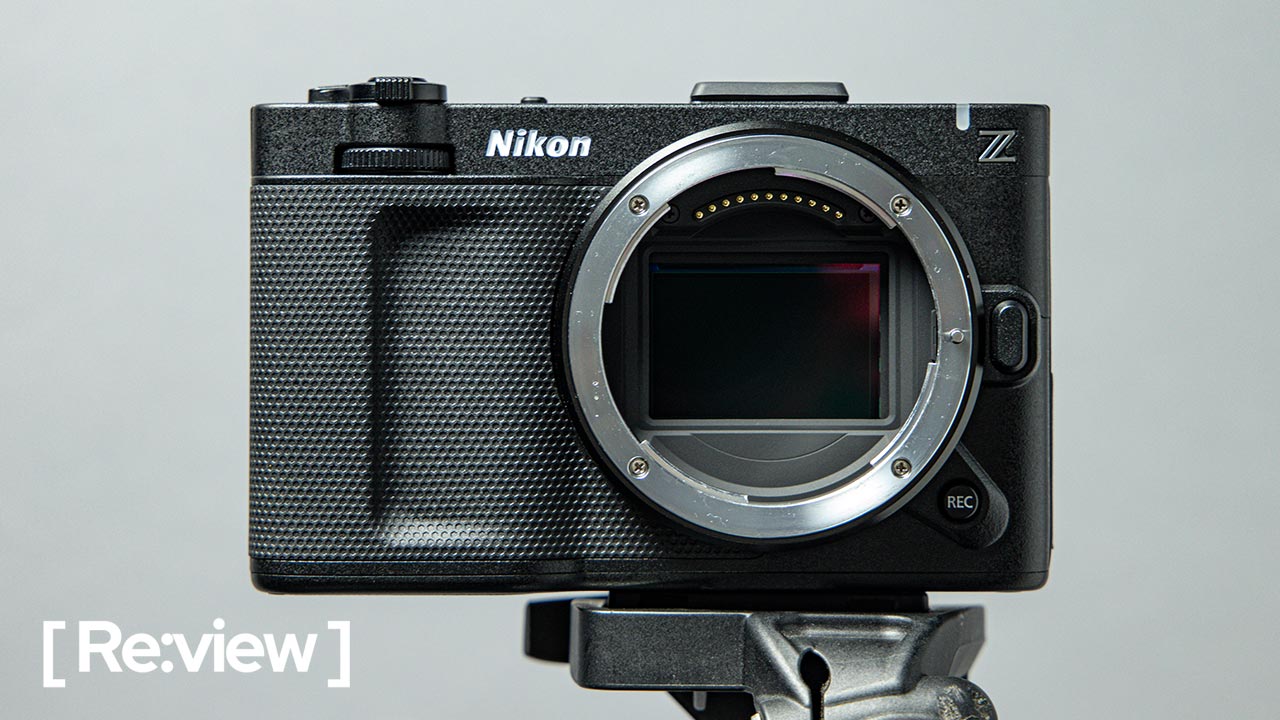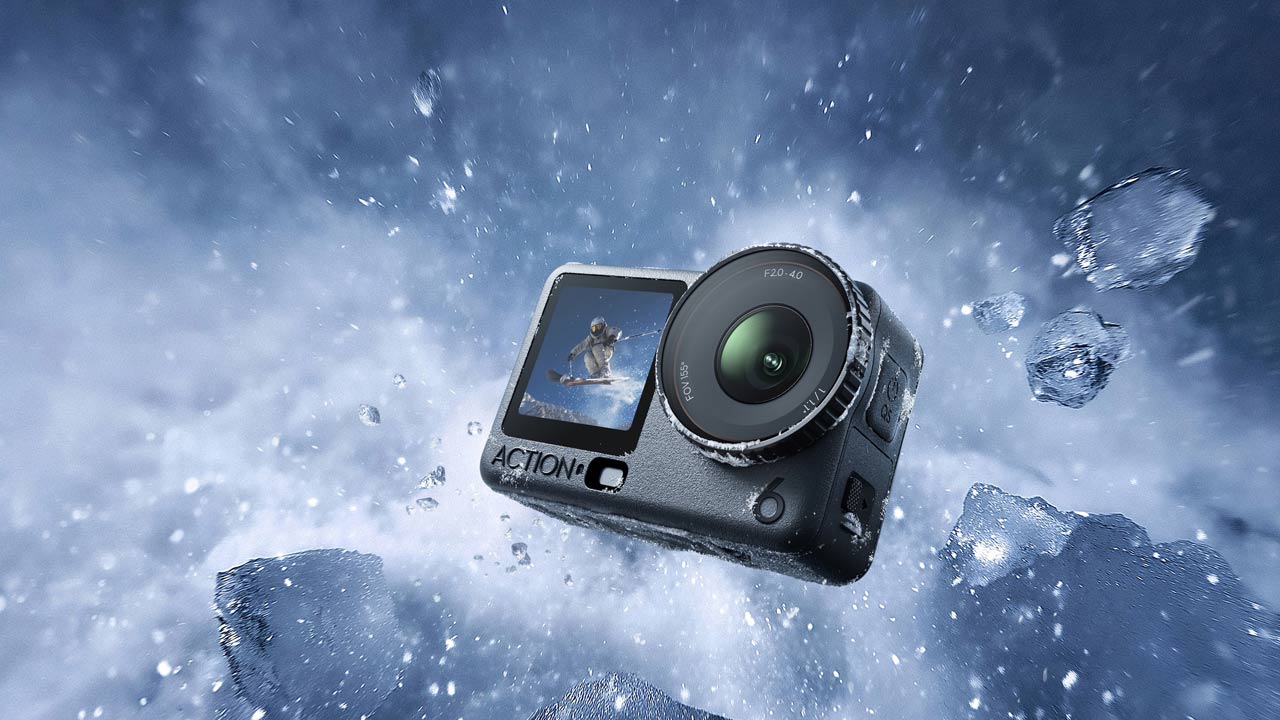Camera Reviews

With the rise of smartphone cameras and the popularity of video and streaming platforms, the elements required of a camera have changed and diversified. In addition to high image quality, the camera is lightweight, easy to use, has easy audio, and provides an intuitive shooting experience like that of a smartphone. The Canon EOS R50 V was released to meet these needs.
This model is a variation of the already highly acclaimed entry-class mirrorless interchangeable-lens camera “EOS R50,” with enhanced video functions. It features a lightweight body that is easy for beginners to handle, and a user-friendly design that supports 4K video, high-precision AF, selfies, and vertical video.
In this article, I will review the appeal and points of interest of the EOS R50 V while actually using it. I would like to delve deeper into how it can be used in real situations, such as for Vlogs and YouTube shoots, while also looking at the differences with previous models.
Video-focused design different from the EOS R50
First, let’s take a look at the design features of the EOS R50 V and see what’s new compared to the EOS R50.
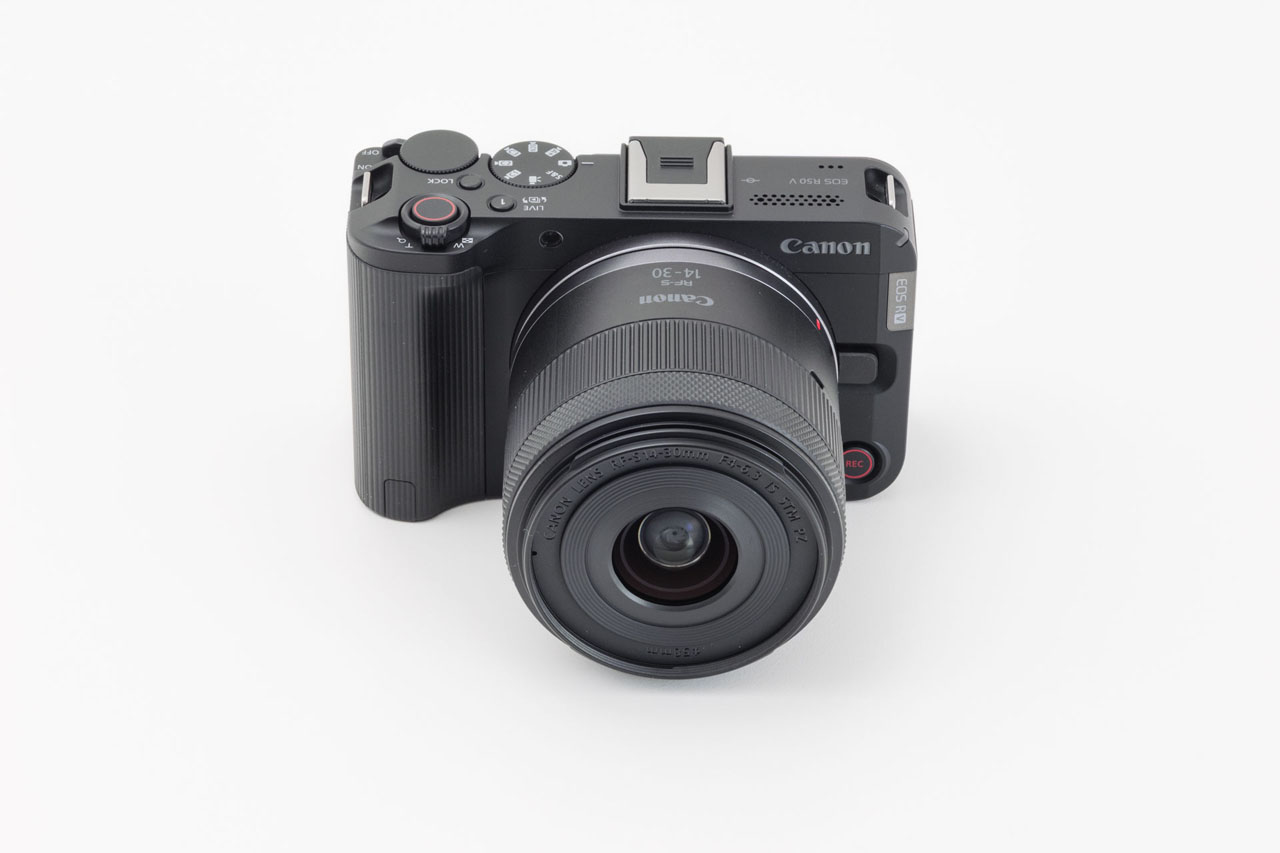
The design omits the viewfinder, making the camera more compact and slightly lighter. The weight is only 5g heavier than the EOS R50, but the flat top surface makes it much easier to carry around.
- Size: Approx. 119.3 (width) x 73.7 (height) x 45.2 (depth) mm
- Weight: Approx. 370g (including battery and card) / Approx. 323g (body only)
The position and orientation of the main dial has been revised for ease of use as a video camera, changing the previous vertical dial turned with the index finger to a horizontal dial turned with the thumb. Also, the mode dial is now specialized for video shooting, with only one photo mode available.

Two Tripod Connectors
With the assumption that the camera will be used for vertical video shooting, there is a tripod hole on the bottom as well as the right side of the body. The key point is that it can easily shoot vertical videos for smartphones. In addition, a live streaming button and a smartphone transfer button have been added, improving usability as a streaming camera and making the flow from shooting to sharing smoother.

It also has many features that improve usability when shooting video, such as a headphone jack for monitoring audio and a ” color button ” that allows access to color filters and Log recording settings.

Another noteworthy point is that the SD card used for recording media is UHS-II compatible. The EOS R50 only supported UHS-I. The increased data transfer speed means large video files can be copied in a shorter time, which is a welcome improvement.
Notable video capabilities including 4K60P and Canon Log 3
The EOS R50 V supports oversampling 4K30P. It also allows recording in 4K60P, which was not possible with the EOS R50, although the image will be cropped. FHD recording is possible at up to 120P.
The compression method is basically LongGOP regardless of the resolution or frame rate, and All Intra is not supported as a general rule (only time-lapse videos are recorded in All Intra). There are four recording formats to choose from:
- XF-HEVC S YCC422 10bit
- XF-HEVC S YCC420 10bit
- XF-AVC S YCC422 10bit
- XF-AVC S YCC420 8bit
New features include Canon Log 3, 14 color filters, Cinema View, False Color, and a video review mode.
The new “Custom Picture” function on the EOS R50 V allows you to select settings such as gamma/color space, color matrix, and look files to adjust the color tone of video recording. This function, which is available on some higher-end models, is also available on the EOS R50 V, even though it is an entry-level model.

Sample Video Shot in Canon Log 3
I also tried recording video using Canon Log 3. When using Canon Log 3 with the EOS R50 V, the standard ISO sensitivity starts from 400. In the PowerShot V1, which I tried out at the same time, Canon Log 3 started at ISO 800, so this allows you to use an ISO one stop lower. Filters can also be used freely, making it easy to shoot even on bright daylight hours.
The camera is equipped with electronic image stabilization. It can be used in conjunction with the optical stabilization of the lens. It does not have the sensor-shift in-body image stabilization found in higher-end models such as the EOS R7. In my experience, it did a good job of correcting blur when shooting handheld while standing still, and there were no scenes where I had any trouble.
However, if we look only at the viewpoint of image stabilization for “walking shots” that are often seen in casual style videos such as Vlogs, I felt that the previously released PowerShot V1 was able to take more stable footage. Recently, there has been an increase in users who shoot videos roughly while moving, but for such purposes, it would be better to prepare other equipment such as an action camera or gimbal.
The built-in microphone has good enough sound quality, but no windscreen is included to reduce wind noise, so an external microphone is recommended for outdoor shooting.
Safe and comfortable for long-term shooting such as review videos
The newly added ” Review Video ” mode prioritizes focus on the subject in the foreground, making it very convenient for shooting videos introducing products. It used to be the case that the camera prioritized focus on the face of a person in the frame, and the AF did not focus on the object you wanted to show, but with the “Review Video” mode, the focus shifts quickly without any complicated settings. Even beginners who are not familiar with cameras will find it easy to shoot.
However, to use the “Review Video” mode, you must select “SCN” on the mode dial. It cannot be used in other manual exposure modes. To reproduce this autofocus in a mode other than “SCN,” you must turn off the “People Priority AF” function from the menu screen and adjust the “SERVO AF speed” and “AF tracking characteristics.”
Although it does not have a cooling fan like the PowerShot V1, it is capable of long-term video recording. With the auto power-off temperature set to “High” and charging via USB-C, I was able to record continuously for up to two hours, the limit for 4K30P. The recording was done by taking fixed-point shots with AF on while I was working at my desk in my own room. The room temperature was such that I started to sweat even with short sleeves, and although the camera was getting hot, it still seemed like it had room to reach its limit.
Battery Performance
When using the battery alone, it will run out in about an hour at 4K30P. The official specifications state that the battery will last for about 1 hour and 10 minutes at 4K30P, and about 2 hours and 20 minutes at FHD30P. When I tried it, the battery ran out after 51 minutes and 18 seconds of 4K30P recording. It seems that the time may vary slightly depending on the settings, environment, battery condition, etc.

Kit lens compatible with power zoom
I will also look at the performance of the RF-S14-30mm F4-6.3 IS STM PZ interchangeable lens that can be purchased as a set with the EOS R50 V. It is a standard zoom lens with a slightly wide-angle angle that covers an angle of view equivalent to 22.4mm to 48mm in full-frame equivalent.
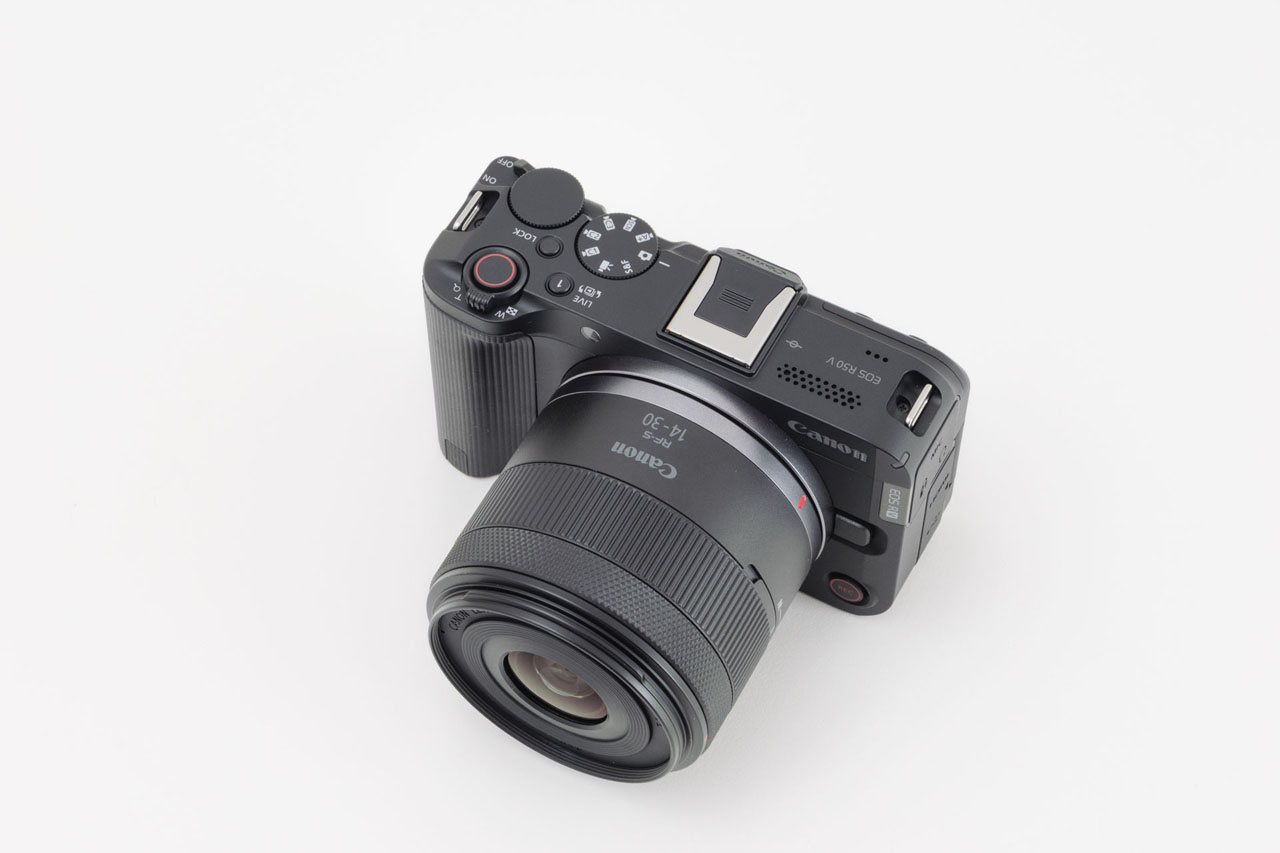
Lens Specs
The maximum aperture is F4 at the wide-angle end and F6.3 at the telephoto end, so it is a rather dark lens. However, when actually using it, the image is sharp and pleasant even at the widest aperture. Many of the standard zoom lenses that come with the company’s entry-level cameras lose resolution when shot at the widest aperture, and the aberration is noticeable, so you don’t feel like using them very often. However, the “RF-S14-30mm F4-6.3 IS STM PZ” can be used safely even at the widest aperture, so the darkness of the lens is not that noticeable.
Another appeal of this lens is its strength in close-up photography. With a minimum shooting distance of 0.15m and a maximum shooting magnification of 0.38x (at 30mm), it is possible to perform simple macro photography. This lens is very useful when you want to show the details of an object, such as in a product introduction. In addition, by getting close to the subject, you can create an effect where the background is blurred.

The autofocus and zoom drive are also quiet. This lens uses a lead screw type STM (stepping motor), which allows for quiet and smooth focusing. Gear-type lenses with the same STM can have an annoying “whining” AF drive sound, but the AF behavior of this lens is smooth and comfortable, rivaling that of a Nano USM.
Biggest Feature of the Lens
The biggest feature of this lens is that it supports “power zoom.” Until now, Canon has supported power zoom on some of its lenses by using a separately sold “power zoom adapter,” but with this lens, it is the first to be able to power zoom without an accessory.
The power zoom can be operated by turning the zoom ring on the lens or using the zoom lever on the camera. The overall length of the lens does not change even when zooming, so there is almost no change in the center of gravity. The design seems suitable for gimbal shooting. The feel of turning the zoom ring is similar to other photographic lenses and is easy to use. It was easy to use for taking photos as well as videos.

Lens zoom speed can be adjusted in two stages, and can be distinguished by the angle by which the ring is turned. Additionally, zoom speeds can also be adjusted from the camera’s menu settings. It can also be set separately for recording and other scenes. For example, you can use a slow zoom for easy viewing during recording, and a fast zoom for other scenes to quickly adjust the angle of view.
Remote Controller
The power zoom can also be operated with the separately sold wireless remote controller “BR-E1.” Even in situations where you’re taking a selfie by yourself, it’s convenient to be able to adjust the angle of view by operating the zoom while standing in front of the camera.
Looking only at the focal length and F-number, this lens did not seem particularly appealing, but when I actually used it, I found it to be extremely versatile and capable of producing a wide range of different images. I would recommend this kit lens to anyone considering purchasing the EOS R50 V.
Canon EOS R50 V for Photographers
When I actually used it, I found it to be surprisingly easy to use for still photography, and the photo performance was excellent. This is because the internal functions of the camera are almost the same as those of the EOS R50, which is particularly popular among Canon cameras.
Canon’s “Dual Pixel CMOS AF II” provides an accurate and fast autofocus system. In addition to people, it can detect animals such as dogs, cats, horses, birds, and vehicles, and automatically adjust the focus. It has amazing AF performance that you wouldn’t expect from an entry-level model. The shutter speed is up to 1/4000 with the electronic front curtain mechanical shutter and up to 1/8000 with the electronic shutter.
There is also a feature called Registered Person Priority AF, which was not available on the EOS R50. This is a function that determines the priority of AF when multiple faces are recognized by registering their faces in advance. For example, when photographing a scene at a children’s sports day, the camera will prioritize focusing on your child among the multiple people.
There is only one mode dial for photography, but you can use the touch panel to select M mode, Av mode, etc. Another concern when using it as a camera is that there are no buttons for AF area selection or exposure compensation, but these functions can be assigned to any button in the “Button Customization” menu.
Some users may be disappointed that there is no viewfinder, but there are surely some users who are attracted to the viewfinder-less design. Above all, the size is compact and very easy to handle.
The R50 V Replaces the M Series
Canon recently stopped producing the EOS M series, which meant that mirrorless cameras without viewfinders were no longer in the lineup, leaving fans of models without viewfinders (or with removable viewfinders), such as the EOS M200 and EOS M6 Mark II, with no options to replace them with similar models.
That’s where the new Canon EOS R50 V comes in. It’s a particularly small and lightweight model among the current EOS R series, making it a very attractive model for those who value portability. When combined with a small, thin lens such as the RF28mm F2.8 STM, it becomes the same size as a compact digital camera.

The Monitor
I sometimes found it difficult to see the monitor in bright outdoor shooting scenes, but the EOS R50 V has a function to increase the brightness of the monitor. This function can be assigned to a button or the quick menu, so you can brighten the monitor with one touch without having to go through the trouble of going through a menu. I found this monitor brightening function very useful when shooting both photos and videos.
There is a video explaining the menu settings, including customizing the EOS R50 V, so if you are interested, please take a look.
Another attractive feature is that the “Color Filter” function can be used for photos. The Color Filter feature allows you to easily apply 14 cinematic and distinctive looks such as “Teal & Orange”. It is available on V series models such as the PowerShot V1 and PowerShot V10, but until now it was only available in video mode. Among them, the EOS R50 V is the only camera that allows you to select a color filter when taking photos (at the time of writing, RAW recording is not supported).

Canon EOS R50 V Differentiation from existing models
A camera with similar performance and price range is the Canon PowerShot V1. I borrowed both the PowerShot V1 and the EOS R50V at the same time, so I would like to explain where the EOS R50V stands in comparison to the two.
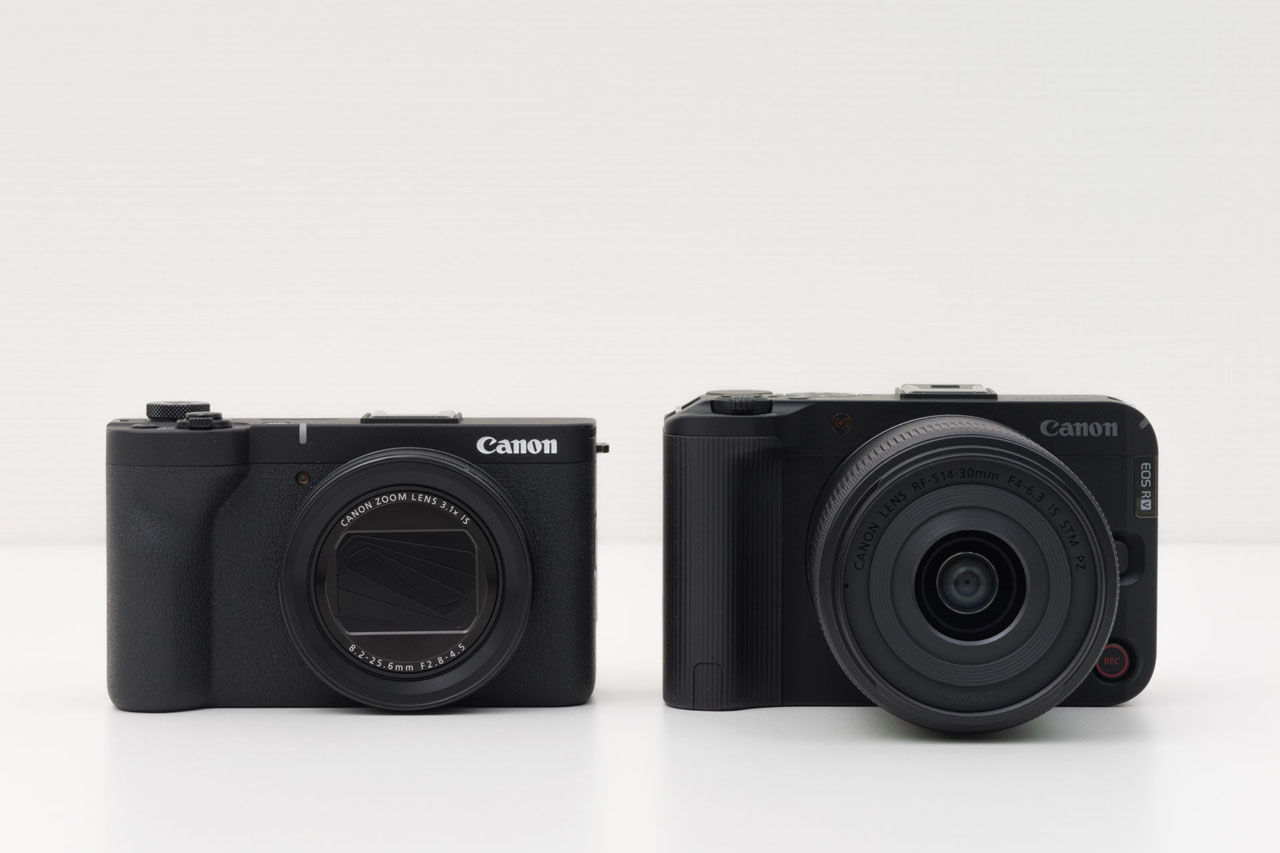
The Canon EOS R50 V has superior potential for image expression. The ability to change lenses and freely use filters is a major benefit. The ability to set the autofocus tracking characteristics and fine-tune manual focusing is also much easier with the EOS R50 V. Overall, there is a wide range of customization and adjustment options, making it a specification that will please more advanced users.
Appeal
However, beginners will likely find the PowerShot V1 easier to use in many situations. Because it has an integrated lens, the image stabilization is better tuned on the PowerShot V1, and it effectively suppresses blur even when shooting while walking. It also comes with a windscreen, so you can record with peace of mind even when shooting outdoors. Although the models are in a similar price range, the V1 is more complete on its own and is easier to use without additional accessories.
I feel that the EOS R50 V is a camera whose appeal is further enhanced by adding accessories such as interchangeable lenses, external microphones, tripods, gimbals, etc. In particular, the kit lens alone is weak when shooting at telephoto or in dark places, so I would like to add some other lens to supplement it.
As mentioned above, the differences between the EOS R50 and the current model are the presence or absence of a viewfinder and the video recording function. Of course, the EOS R50 can also shoot videos, but when it comes to using it as a full-fledged video camera, it doesn’t have a monitor terminal for audio and is lacking in basic features for shooting videos.
In that respect, the EOS R50 V is designed with the assumption that you will be taking videos in great detail, and it has specifications that address all of these needs. You should choose a camera based on whether you plan to use it primarily for videos or photos.
Summary: What is the target market for the Canon EOS R50 V?
Canon’s EOS R50 V is a derivative model based on the EOS R50 mirrorless single-lens camera, with enhanced video recording functions and a completely redesigned design to make it easier to shoot movies. Despite being in the entry-level price range, it is a full-fledged camera that can record for long periods of time and has a custom picture function that allows Log recording. There are many benefits that only the EOS R50 V has, such as new 4K60P crop recording, support for UHS-II SD cards, and the ability to use registered person priority AF and color filter functions.
Up until now, Canon cameras designed for video have been limited to the high-end CINEMA EOS lineup and the relatively entry-level PowerShot V series of compact digital cameras. The EOS R50 V is a model that fills a middle ground. Since it is based on the existing EOS R50 model, it doesn’t seem particularly new at first glance, but when viewed in the overall Canon lineup, it occupies a new position that has never been seen before, and it felt very fresh when I actually used it.
If you are a videographer looking to use a Canon interchangeable lens camera, the reasonably priced EOS R50 V is a very attractive option. We recommend using it together with the kit lens “RF-S14-30mm F4-6.3 IS STM PZ”.
For photographers who want a compact mirrorless single-lens camera, the EOS R50 V is also a strong choice. Although it doesn’t have a viewfinder and the buttons and dials aren’t arranged like a camera, it can be fully used as a still camera by customizing the buttons and settings.
Originally written in Japanese by Akira Oda | Profile
A “lifestyle photographer” who spreads the joy of everyday life with a camera. He explains how to use camera equipment and how to take photos in an easy-to-understand manner for beginners on YouTube and on his blog “KOBE FINDER” under the name “Aki.”


